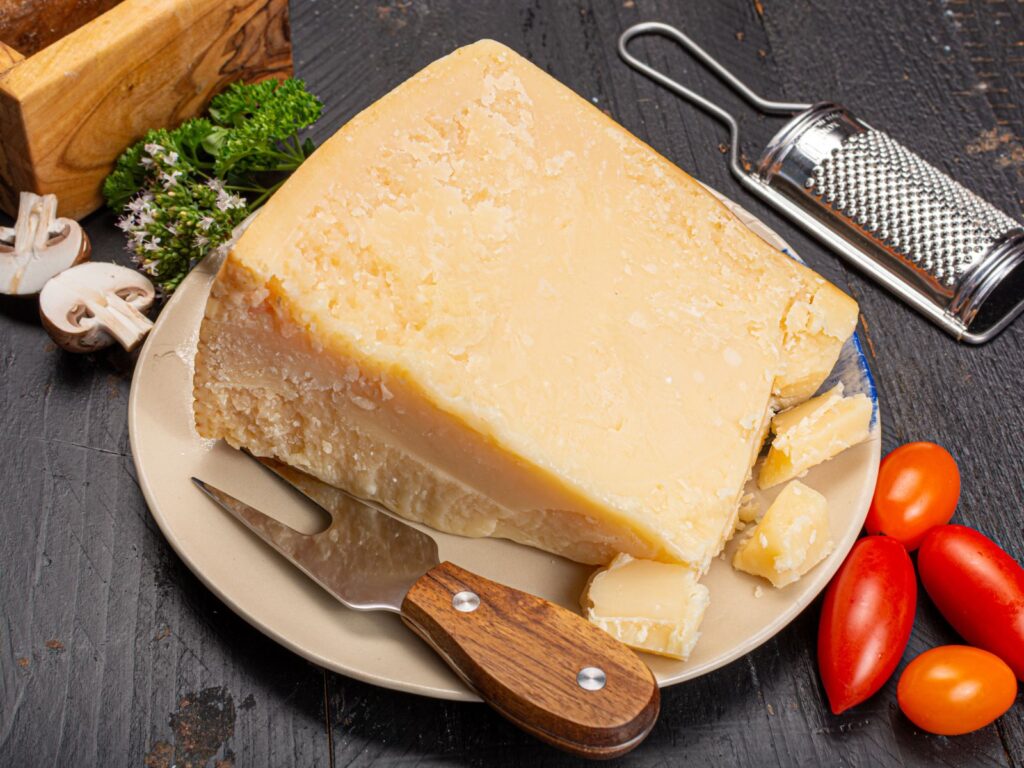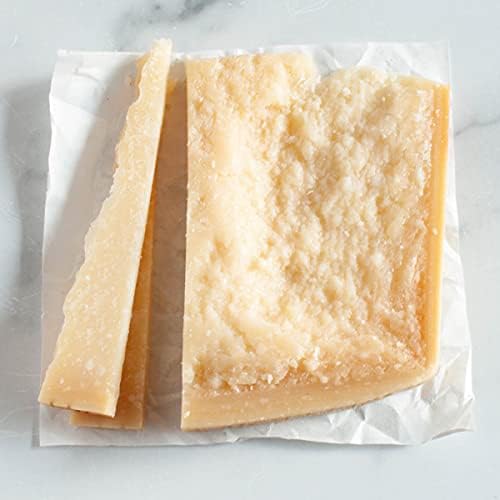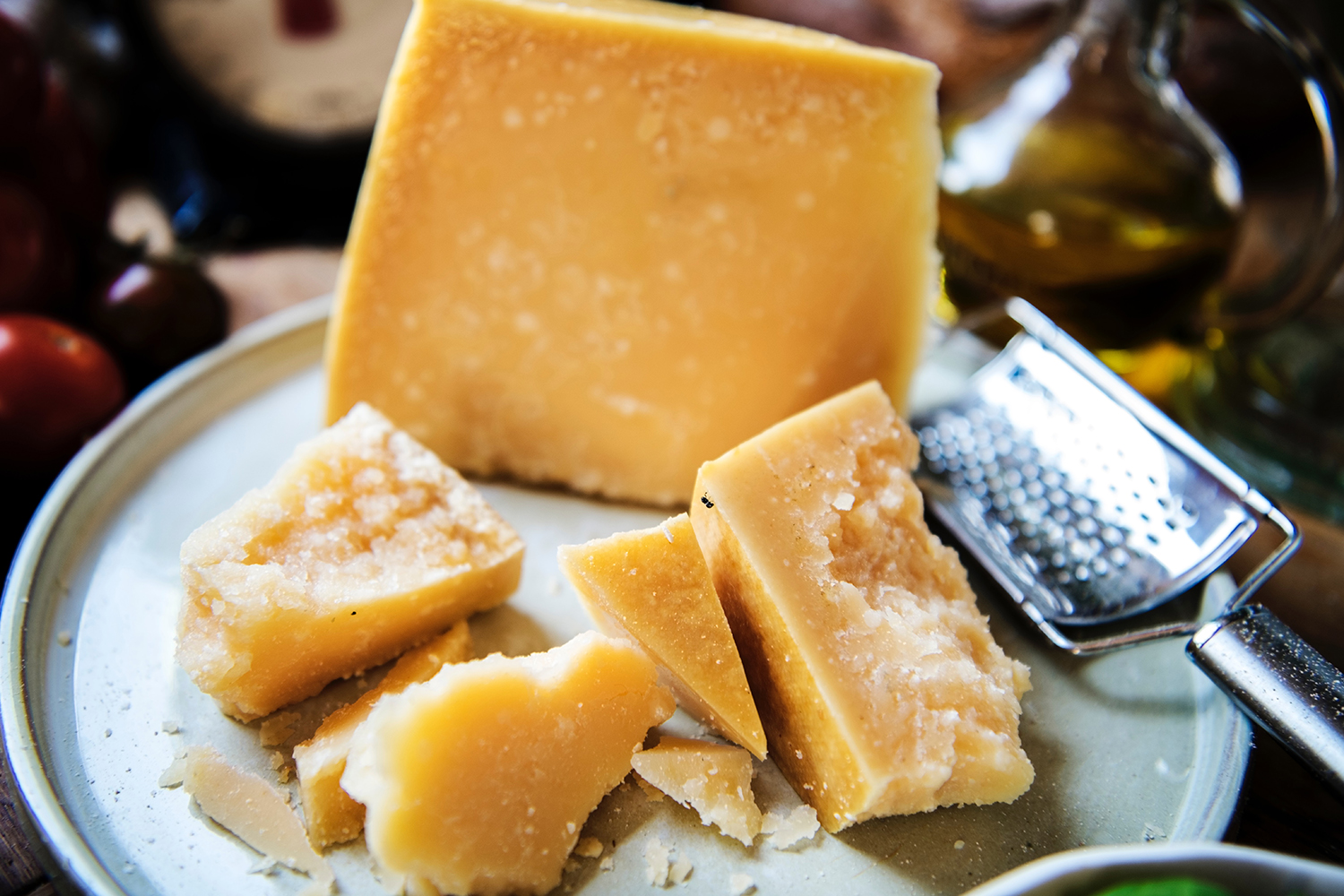Asiago Cheese: A Distinct Flavor Profile

Asiago cheese boasts a distinct flavor profile that sets it apart from other cheeses, including Parmesan. Known for its slightly buttery, creamy, and nutty taste, Asiago also carries a noticeable bitterness, particularly in the Stravecchio variety. This bitterness adds depth and complexity to the cheese, making it a favorite among those who enjoy more robust and intense flavors. Whether grated or melted, Asiago cheese adds a unique twist to dishes, making it a delightful choice for cheese lovers looking to experiment with different flavors in their culinary creations.
Characteristics Of Asiago Cheese
Asiago cheese showcases a unique set of characteristics that make it stand out from other cheeses. It has a slightly buttery and creamy texture, accompanied by a distinctive nutty flavor. However, what sets Asiago apart is its noticeable bitterness, particularly in the Stravecchio variety. This bitterness adds depth and complexity to the cheese, making it a favored choice for those who enjoy more intense flavors. Whether grated or melted, Asiago cheese brings a distinct twist to dishes, making it an exciting choice for cheese lovers looking to elevate their culinary creations.
Culinary Uses Of Asiago Cheese
Asiago cheese is a versatile ingredient that can elevate the flavor of various dishes. Its distinct nutty and slightly bitter taste makes it a perfect addition to salads, sandwiches, and pasta dishes. Grated Asiago cheese can be sprinkled over soups or used as a topping for pizzas. It also pairs well with fruits and nuts, making it a delicious addition to charcuterie boards. The creamy texture of Asiago cheese makes it easy to melt, making it ideal for gratins and casseroles. Whether it’s incorporated into a recipe or enjoyed on its own, Asiago cheese adds a rich and flavorful element to any culinary creation.
Parmesan Cheese: A Versatile Italian Staple

Parmesan cheese, also known as Parmigiano Reggiano, is a versatile Italian staple that is loved by cheese enthusiasts all over the world. With its rich and nutty flavor, Parmesan adds a depth of taste to a wide range of dishes. It is commonly grated and sprinkled over pasta, risotto, and soups, enhancing their flavors with its salty and savory notes. Parmesan is also a popular choice for cheeseboards, where its distinct taste pairs well with fruits, nuts, and cured meats. Its crumbly texture makes it easy to incorporate into both hot and cold dishes, making it a true culinary essential.
What Makes Parmesan Cheese Unique
Parmesan cheese, also known as Parmigiano Reggiano, stands out for its unique characteristics and production process. Derived from cow’s milk, it undergoes a meticulous aging process, typically lasting for 12 to 36 months. This extended aging brings out the cheese’s distinct flavors, including a sharp and robust taste with fruity and savory notes. The aging also contributes to the crumbly texture and grainy consistency of Parmesan cheese. Its rich umami flavor adds depth and complexity to various dishes, making it a beloved choice for cheese enthusiasts and a staple in Italian cuisine.
Parmesan Cheese In Various Dishes
Parmesan cheese is a versatile ingredient that adds a burst of flavor to a variety of dishes. Its sharp and robust taste enhances pasta dishes like spaghetti carbonara and fettuccine Alfredo, giving them a rich and savory flavor. Parmesan can also be sprinkled over salads and roasted vegetables, adding a nutty and salty kick. It pairs perfectly with tomato-based dishes like lasagna and pizza, and can also be grated on top of soups or mixed into creamy risottos. Parmesan cheese’s distinct flavors and texture make it a culinary favorite in both Italian and international cuisine.
Flavor Comparison: Asiago Vs Parmesan

When it comes to flavor, Asiago and Parmesan each have their own distinct characteristics that set them apart. Asiago cheese is known for its buttery, creamy, and nutty profile, with a noticeable bitterness in the case of aged Asiago Stravecchio. On the other hand, Parmesan boasts a sharper and more robust taste, accompanied by fruity and savory notes and a distinct earthiness. Parmigiano Reggiano, especially when fully aged, tends to have a bit more of the sought-after umami flavor. Both cheeses bring unique and delicious flavors to the table, making the choice between them a delightful dilemma for cheese lovers.
Taste Profile Of Asiago And Parmesan
Asiago and Parmesan, two popular Italian cheeses, each have their unique taste profiles. Asiago cheese is characterized by its buttery, creamy, and nutty flavors. It has a mild to medium intensity with a hint of bitterness in aged varieties like Asiago Stravecchio. On the other hand, Parmesan cheese offers a sharper and more robust taste. It has fruity and savory notes, along with a distinct earthiness. Parmigiano Reggiano, when fully aged, showcases the sought-after umami flavor. Both cheeses bring delightful and distinct flavors to dishes, adding richness and depth to various recipes.
Pairing Suggestions For Asiago And Parmesan
Asiago and Parmesan cheeses are both incredibly versatile and can be paired with a wide range of ingredients to enhance flavors in various dishes. Here are some delicious pairing suggestions for Asiago and Parmesan cheese:
- Asiago:
- Pair Asiago with cured meats like prosciutto or salami for a savory and salty combination.- Add grated Asiago to salads with fresh greens, tomatoes, and a tangy vinaigrette for a burst of flavor.- Enjoy Asiago with fresh or dried fruits such as apples, pears, or figs for a delightful contrast of sweet and savory.- Serve Asiago alongside crusty bread or crackers for a simple and satisfying appetizer.
- Parmesan:
- Use grated Parmesan as a topping for pasta dishes like spaghetti carbonara or fettuccine Alfredo.- Sprinkle Parmesan over roasted vegetables like broccoli or cauliflower for an extra layer of richness.- Pair Parmesan with aged balsamic vinegar for a classic combination of sweet and tangy flavors.- Enjoy Parmesan with crusty bread or breadsticks for a quick and delicious snack.
Remember, these suggestions are just the beginning. Don’t be afraid to experiment and discover your own favorite pairings with Asiago and Parmesan cheeses.
Nutritional Value And Aging Process

Asiago and Parmesan cheeses not only offer exceptional flavors, but they also provide a good amount of nutritional value. Both cheeses are rich in protein and calcium, which are essential for maintaining strong bones and muscles. However, Parmesan cheese tends to have a slightly higher protein content than Asiago cheese.
The aging process also plays a significant role in the flavor and texture of these cheeses. Asiago cheese is typically aged for a shorter period, resulting in a milder flavor and a smoother texture. Parmesan cheese, on the other hand, undergoes a longer aging process, which intensifies its flavors and creates a crumbly texture.
Remember to choose the cheese that matches your preferences and dietary needs.
Nutritional Content In Asiago And Parmesan
Asiago and Parmesan cheeses not only offer exceptional flavors, but they also provide a good amount of nutritional value. Both cheeses are rich in protein and calcium, which are essential for maintaining strong bones and muscles. However, Parmesan cheese tends to have a slightly higher protein content than Asiago cheese. These cheeses also contain important vitamins and minerals, such as vitamin A and phosphorus. It’s important to note that the nutritional values may vary depending on the specific brand and aging process of the cheese. Nevertheless, incorporating Asiago or Parmesan cheese into your diet can contribute to a well-balanced and flavorful meal.
Aging Process Impact On Flavor And Texture
The aging process plays a crucial role in shaping the flavor and texture of Asiago and Parmesan cheeses. Parmesan cheese, with its longer aging process of 12 to 36 months, develops a complex and intense flavor. The aging allows the cheese to develop nutty undertones and a granular texture that crumbles easily. On the other hand, Asiago cheese, with its shorter aging period of 30 days to 2 years, has a milder flavor with a creamy to sharp taste. The texture of Asiago cheese can range from semi-soft to hard, depending on the aging time. So, the aging process significantly influences the final taste and texture of the cheeses, giving them their distinct characteristics.
Selecting The Right Cheese For Your Dish

When it comes to selecting the right cheese for your dish, both Asiago and Parmesan can be excellent choices. It ultimately depends on the specific flavors and textures you are looking for in your recipe.
If you’re aiming for a milder, creamier taste with a hint of nuttiness, Asiago cheese is a great option. It pairs well with dishes like pasta, salads, and sandwiches, adding a subtle richness to the overall flavor profile.
On the other hand, if you prefer a sharper, more robust flavor with a slightly grainy texture, Parmesan cheese is the way to go. Its bold taste enhances dishes such as pasta, soups, risotto, and gratins, adding a unique depth of flavor.
In summary, both Asiago and Parmesan cheeses have distinct characteristics that can elevate your dishes. Consider the specific flavor and texture you desire and choose accordingly to achieve the perfect culinary experience.
Choosing Between Asiago And Parmesan
When it comes to choosing between Asiago and Parmesan cheese, it really depends on the specific flavors and characteristics you’re looking for in your dish. If you prefer a milder and creamier taste with a hint of nuttiness, Asiago cheese is a great option. It pairs well with pasta, salads, and sandwiches, adding a subtle richness to the overall flavor profile. On the other hand, if you’re looking for a sharper and more robust flavor with a slightly grainy texture, Parmesan cheese is the way to go. It enhances dishes such as pasta, soups, risotto, and gratins, adding a unique depth of flavor. Both cheeses have their own distinct qualities, so consider your desired taste and texture when making your choice.
Tips For Storing Asiago And Parmesan
When it comes to storing Asiago and Parmesan cheese, it’s important to keep them fresh and maintain their flavor. Here are some tips for storing these cheeses:
- Wrap it right: Both Asiago and Parmesan should be tightly wrapped in wax paper or aluminum foil to prevent them from drying out. Avoid using plastic wrap as it can trap moisture and lead to mold growth.
- Refrigerate properly: Store both cheeses in the refrigerator, preferably in the cheese or vegetable drawer. The temperature should be between 34-38°F (1-3°C) to maintain their freshness.
- Separate strong odors: To prevent the cheeses from absorbing strong odors, store them in a sealed container or separate them from other pungent foods in the fridge.
- Avoid freezing: While Parmesan can be grated and frozen for longer storage, it might affect the texture and flavor. Asiago is not recommended for freezing.
- Use it fresh: Both cheeses are best enjoyed when freshly grated or sliced. To maximize their flavor, use them within a few days of opening.
By following these tips, you can extend the shelf life of Asiago and Parmesan cheeses and ensure that they remain flavorful and ready for your next culinary adventure.
Conclusion

In conclusion, Asiago cheese and Parmesan cheese both offer unique flavors and culinary versatility. Asiago cheese, with its distinct nutty taste, is commonly used in pasta dishes, salads, and soups. On the other hand, Parmesan cheese’s sharp and savory flavor makes it a perfect choice for grating over pasta, risotto, and salads. While there may be some similarities between these two cheeses, understanding their flavor profiles and choosing the right cheese for your dish can elevate your culinary experience. So whether you’re craving the richness of Asiago or the boldness of Parmesan, both cheeses are sure to satisfy any cheese lover’s palate.
Summarizing The Differences And Similarities
In summary, Asiago cheese and Parmesan cheese both have distinct flavor profiles and culinary uses. Asiago cheese offers a buttery, creamy, and nutty taste with a noticeable bitterness, while Parmesan cheese is sharper, more robust, and has fruity and savory notes with distinct earthiness. Both cheeses are aged, but Parmesan typically has a longer aging process. While they share some similarities, such as being Italian cheeses and being used in various dishes, the choice between Asiago and Parmesan ultimately comes down to personal preference and the specific flavor profile desired for a particular dish.
Final Thoughts On Asiago Vs Parmesan
When it comes to choosing between Asiago and Parmesan cheese, it ultimately boils down to personal preference and the desired flavor profile for a specific dish. Both cheeses have their distinctive characteristics and culinary uses. Asiago offers a creamy and nutty taste with a touch of bitterness, while Parmesan provides a sharper and robust flavor with fruity and savory notes. Both cheeses are aged, but Parmesan typically has a longer aging process, resulting in a more intense flavor. Whether you prefer the buttery creaminess of Asiago or the boldness of Parmesan, these cheeses are sure to enhance any dish and delight the taste buds of cheese lovers everywhere.
FAQ About Asiago Cheese Vs Parmesan: A Cheese Lover’s Delightful Dilemma
Q: What is the main difference between Asiago Cheese and Parmesan?
A: Asiago Cheese is a semi-firm cheese made from cow’s milk with a sweeter flavor, while Parmesan is a hard cheese made from cow’s milk with a more nutty and sharp taste.
Q: Can Asiago Cheese be used as a substitute for Parmesan?
A: Yes, Asiago Cheese can be a good substitute for Parmesan in many dishes due to its similar texture and flavor profile, although they do have distinct taste differences.
Q: Which cheese is better for grating over pasta dishes?
A: Parmesan is more commonly used for grating over pasta dishes due to its hard texture, strong flavor, and ability to melt smoothly.
Q: Are there specific dishes that are better suited for Asiago Cheese over Parmesan?
A: Asiago Cheese is great for salads, sandwiches, and snacking due to its milder taste compared to Parmesan. It also pairs well with fruits and nuts.
Q: What should you consider when choosing between Asiago Cheese and Parmesan?
A: Consider the dish you are preparing – if you want a stronger, more robust flavor, choose Parmesan. If you prefer a slightly sweeter and milder taste, go for Asiago Cheese.
Q: Can both Asiago Cheese and Parmesan be used in cooking or baking?
A: Yes, both Asiago Cheese and Parmesan are versatile cheeses that can be used in various cooking and baking recipes to add depth of flavor and richness.

Duke City Kitchen, known for its fresh, simple, and delicious cuisine, has a rich history deeply rooted in the heart of the local food scene. Since its inception, Duke City Kitchen has been dedicated to providing an exceptional dining experience that celebrates the region’s flavors. Founded by a passionate group of food enthusiasts, Duke City Kitchen opened its doors with the vision of offering a welcoming space where people could gather to enjoy thoughtfully prepared meals made from the finest, locally sourced ingredients. This commitment to quality and community has been a driving force behind Duke City Kitchen’s success.